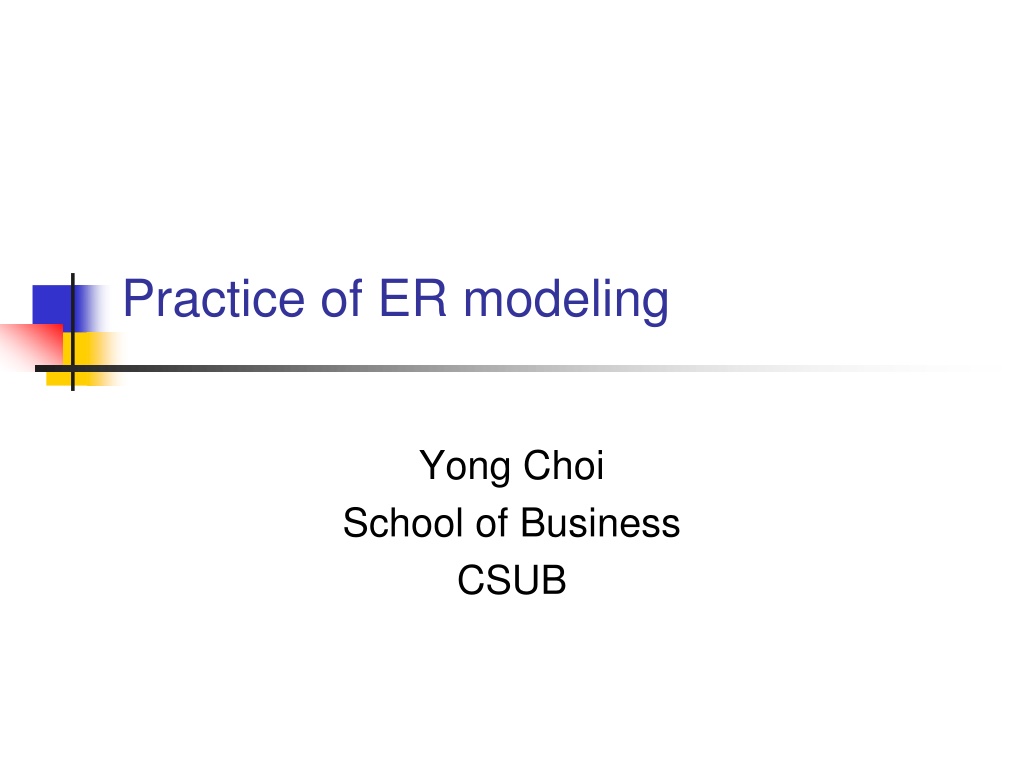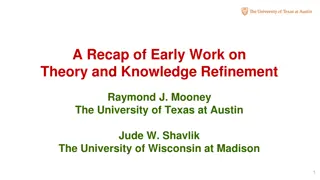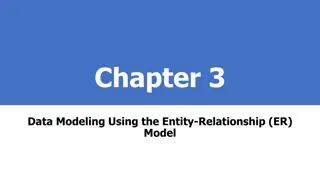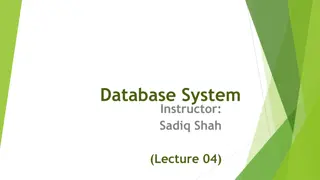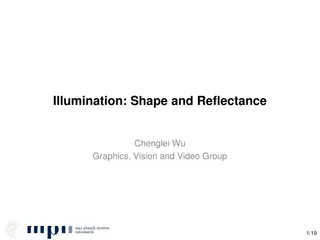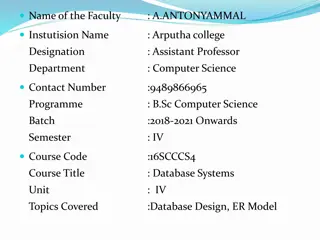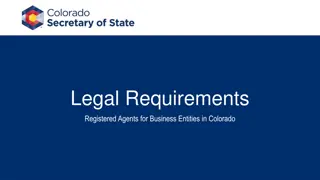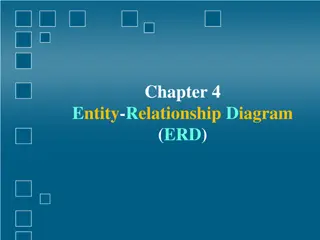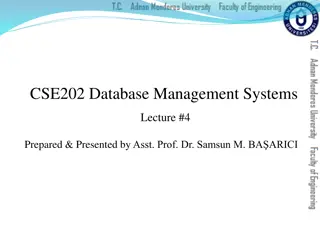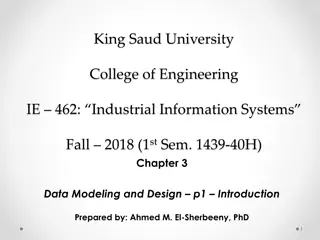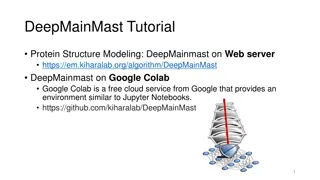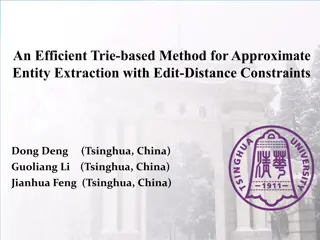Entity-Relationship Modeling Examples & Refinement for Data Management
Explore various scenarios related to entity-relationship modeling, including cardinality identification, eliminating unnecessary details, and refining business rules. Examples touch upon scenarios in healthcare, education, organizational hierarchies, and employee data management.
Download Presentation

Please find below an Image/Link to download the presentation.
The content on the website is provided AS IS for your information and personal use only. It may not be sold, licensed, or shared on other websites without obtaining consent from the author. Download presentation by click this link. If you encounter any issues during the download, it is possible that the publisher has removed the file from their server.
E N D
Presentation Transcript
Practice of ER modeling Yong Choi School of Business CSUB
Identify Cardinality A purchase order can be placed for many products. A product may appear on many purchase orders. Purchase Order (many, optional) -------------- Product (many, optional) A customer may submit many orders. An order is placed for exactly one customer. Customer (one, mandatory) -------------- Order (many, optional)
Eliminate unnecessary details and refine Business Rule 1 According to the policy of the California Hospital, a patient can have patient records. That is, each patient may have at least one or many records. However, each patient record should belong to one patient. Patient (one) ------ Patient Record (many, optional)
Eliminate unnecessary details and refine Business Rule 2 The California State University has changed one of the policies about course schedule based on feedback from professors and students. One of the changed policies is that a course may have one or more scheduled sections. Also, each section can have one course. Creating a correct number of sections for each semester is very important. Course (one, optimal) ------ Section (many, optional)
Universally Applicable. The piano technicians have a hierarchy of reporting relationships: some of them have supervisory responsibilities in addition to their inspection role and have multiple other technicians report to them.
Universally Applicable. Each dependent must be identified uniquely by the last name and employee s ID. Since each dependent must depend on an employee s health insurance, we do not want to keep and maintain health insurance information about a child once the parent leaves the company. EMP DEP
Multiple Entities and Attributes Recently, our company installed a new relation database system and the company database needs to store information about employees, departments and children of employees. Each employee can be identified by ssn with salary and office phone number. Likewise, each departments also can identified by dno with dname and budget. Especially, children of employees should be identified with last name and age.
Multiple Entities and Attributes (cont) Employees work in departments; each department is managed by an employee; a child must be identified uniquely by name when the parent (who is an employee; assume that only one parent works for the company) is known. We are not interested in information about a child once the parent leaves the company.
